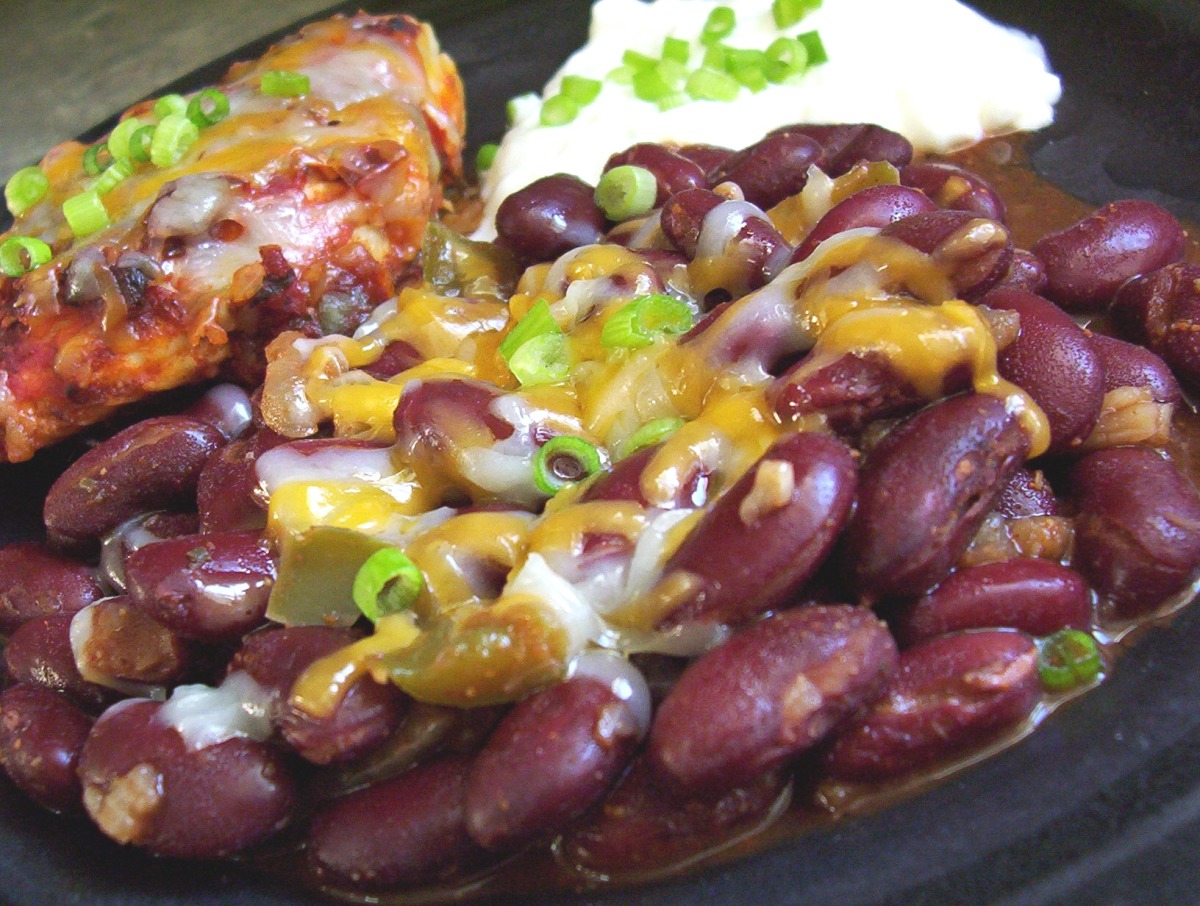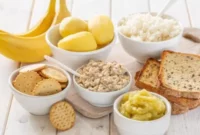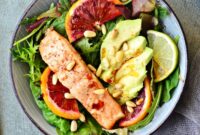Beans on South Beach Diet: This exploration delves into the compatibility of legumes, particularly beans, with the popular South Beach Diet. We’ll examine the nutritional profile of various beans, comparing their carbohydrate content and glycemic index to other permitted foods. The discussion will cover incorporating beans effectively into the diet’s different phases, addressing potential challenges like gas and bloating, and ultimately highlighting the potential benefits of adding this nutritious food group to your South Beach eating plan.
We will analyze the South Beach Diet’s phases and restrictions, focusing on how beans fit within those parameters. Recipes and meal planning suggestions will be provided, along with strategies for managing potential digestive discomfort. The goal is to provide a practical and informative guide for anyone considering incorporating beans into their South Beach Diet journey.
Beans and the South Beach Diet
The South Beach Diet, known for its focus on healthy fats and controlled carbohydrate intake, often sparks questions regarding the inclusion of legumes like beans. While beans are a nutritional powerhouse, their carbohydrate content necessitates careful consideration within the diet’s framework. This section will delve into the nutritional profile of various bean types, their carbohydrate comparison to other South Beach-approved foods, their glycemic index impact, and provide suitable recipe examples.
Nutritional Profiles of Various Bean Types
Beans are an excellent source of fiber, protein, and various micronutrients. However, their carbohydrate content varies depending on the type. Kidney beans, for example, are rich in iron and antioxidants, while black beans offer a good source of manganese and folate. Pinto beans contribute to a healthy intake of molybdenum and potassium. These differences should be considered when planning meals within the South Beach Diet. The fiber content in all bean types is particularly beneficial, promoting satiety and aiding digestion, which aligns well with the diet’s principles.
Carbohydrate Content Comparison
Comparing the carbohydrate content of beans to other South Beach-approved foods requires careful consideration of serving sizes. While beans do contain carbohydrates, they are generally lower on the glycemic index than many refined carbohydrates. A serving of beans provides a more sustained energy release compared to a similar serving of white bread or sugary cereals, which are generally restricted or limited during the initial phases of the South Beach Diet. The fiber content in beans also slows down the absorption of glucose into the bloodstream. Focusing on non-starchy vegetables and lean protein sources alongside beans helps maintain a balanced approach.
Glycemic Index of Beans and Blood Sugar Impact
The glycemic index (GI) measures how quickly a carbohydrate-containing food raises blood sugar levels. Beans generally have a low to moderate glycemic index, meaning they cause a slower and more gradual rise in blood sugar compared to high-GI foods. For example, kidney beans typically have a GI of around 30, while black beans may be slightly higher, around 35. This makes them a relatively suitable choice for the South Beach Diet, particularly in later phases where carbohydrate intake is gradually increased. However, portion control remains crucial to manage blood sugar effectively.
South Beach Diet-Friendly Bean Recipes
Incorporating beans into South Beach Diet meals requires mindful planning. Focusing on recipes that combine beans with healthy fats, lean proteins, and plenty of non-starchy vegetables ensures a balanced and satisfying meal. For example, a black bean salsa with avocado and baked salmon provides a delicious and compliant option. A hearty lentil soup with spinach and a dollop of Greek yogurt is another excellent choice. Pinto beans can be incorporated into a flavorful chili, paired with lean ground turkey and plenty of vegetables. Remember to always check nutritional information for specific carbohydrate and glycemic index values.
| Bean Type | Carb Content (per 1/2 cup cooked) | Glycemic Index (approximate) | Phase Suitability |
| Kidney Beans | 11-13g | 30 | Phase 2 and beyond |
| Black Beans | 15-17g | 35 | Phase 2 and beyond |
| Pinto Beans | 14-16g | 30-35 | Phase 2 and beyond |
| Lentils | 18-20g | 20-30 | Phase 2 and beyond |
Potential Benefits and Drawbacks
Incorporating beans into a South Beach Diet presents a unique opportunity to enhance the nutritional profile and potentially improve adherence. However, careful consideration of both the advantages and disadvantages is crucial for successful integration. This section will explore the potential benefits and drawbacks of adding beans to this popular dietary plan.
Beans offer several compelling advantages within the South Beach Diet framework. Their high fiber content contributes significantly to satiety, helping manage hunger and cravings, a key factor in weight management. Furthermore, beans are an excellent source of plant-based protein, essential for maintaining muscle mass and supporting overall metabolic function, which aligns perfectly with the South Beach Diet’s emphasis on lean protein sources. The inclusion of beans also introduces a wider variety of micronutrients, including various vitamins and minerals, enhancing the overall nutritional balance of the diet.
Fiber Content Comparison
The fiber content of beans is a significant point of consideration when comparing them to other fiber sources within the South Beach Diet. Beans are exceptionally rich in both soluble and insoluble fiber. For example, a cup of cooked kidney beans contains approximately 15 grams of fiber, a substantial portion of the recommended daily intake. This compares favorably to other South Beach-approved fiber sources like vegetables (e.g., broccoli, spinach) and whole grains (in moderation, during later phases). However, it’s important to note that the type and amount of fiber vary significantly between different bean varieties. While some beans might be higher in insoluble fiber promoting regularity, others may have a higher soluble fiber content which can help regulate blood sugar levels. This diversity allows for customization within the diet.
Potential Drawbacks of Bean Inclusion
Despite their benefits, incorporating beans into the South Beach Diet does present some challenges. The high fiber content, while beneficial for satiety, can also lead to gastrointestinal discomfort, such as bloating and gas, especially when initially increasing bean consumption. Furthermore, certain bean varieties contain carbohydrates that can impact blood sugar levels, although generally less than many other carbohydrate sources. Careful monitoring and gradual introduction of beans are essential to mitigate these potential issues. Additionally, beans can interact with certain medications, so individuals taking prescription drugs should consult their physician before significantly increasing bean intake. Finally, the preparation time and potential for digestive discomfort might make beans a less convenient option compared to some other South Beach-approved foods for some individuals.
Addressing Common Concerns
The South Beach Diet, with its emphasis on lower carbohydrate intake, presents unique challenges when incorporating beans, a nutritional powerhouse often associated with digestive discomfort and higher carbohydrate counts. However, with careful planning and preparation, these concerns can be effectively mitigated. This section addresses strategies for managing digestive issues, controlling carbohydrate intake, and optimizing bean preparation for improved digestion.
Managing Potential Digestive Issues Associated with Increased Bean Consumption
Digestive discomfort, such as gas and bloating, is a common concern when increasing bean consumption. This is primarily due to the raffinose family of oligosaccharides (RFOs), complex sugars that are poorly digested in the small intestine. These undigested sugars then reach the large intestine where they are fermented by gut bacteria, producing gas as a byproduct.
Strategies for Minimizing Gas and Bloating
Several strategies can help minimize gas and bloating associated with bean consumption. Soaking beans overnight before cooking significantly reduces RFOs, making them easier to digest. This process allows enzymes to break down some of these complex sugars. Additionally, slow introduction of beans into your diet, starting with small portions and gradually increasing the amount over time, allows your gut microbiome to adapt. Finally, incorporating digestive enzymes, readily available as supplements, can aid in the breakdown of RFOs, thereby reducing gas production. Choosing low-FODMAP varieties of beans, such as lentils, can also help alleviate digestive symptoms for some individuals.
Strategies for Incorporating Beans Without Exceeding Daily Carbohydrate Limits
The South Beach Diet emphasizes carbohydrate control. Beans, while nutritious, are relatively high in carbohydrates. Careful portion control is crucial. A half-cup serving of cooked beans typically contains around 15-20 grams of carbohydrates, depending on the type of bean. To stay within daily limits, consider substituting beans for other higher-carbohydrate foods in your meal plan. For example, replacing a portion of rice or pasta with beans in a dish can add protein and fiber while maintaining or even reducing the overall carbohydrate content. Furthermore, incorporating beans into meals alongside non-starchy vegetables can help create a more balanced and lower-carbohydrate meal. Precise carbohydrate counts vary by bean type and preparation method, so checking nutrition labels is recommended.
Methods for Preparing Beans to Minimize Gas and Bloating
Beyond soaking, several cooking methods can minimize gas production. Pressure cooking beans, rather than simmering them on the stovetop, significantly reduces the cooking time and may lessen the formation of gas-producing compounds. Adding spices such as cumin and coriander during cooking may also help improve digestion and reduce bloating for some individuals. These spices have been traditionally used to aid digestion in various cultures. Finally, thorough chewing of beans during consumption helps the digestive process begin in the mouth, improving overall digestion and reducing the burden on the gut.
Ultimate Conclusion
Successfully integrating beans into the South Beach Diet offers a rewarding path to weight management and improved health. By understanding the nutritional profile of various bean types, carefully managing carbohydrate intake, and employing strategies to mitigate digestive issues, individuals can reap the benefits of increased fiber, protein, and essential nutrients. Remember that mindful planning and portion control are key to enjoying the deliciousness and health benefits of beans while adhering to the South Beach Diet’s principles. This approach allows for a more diverse and satisfying dietary experience without compromising the diet’s core goals.




